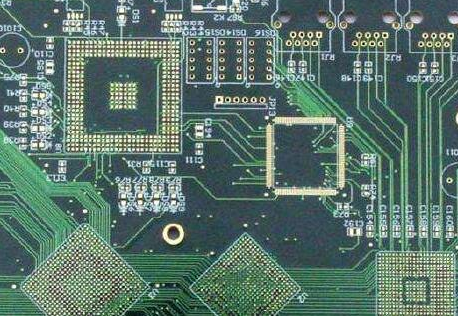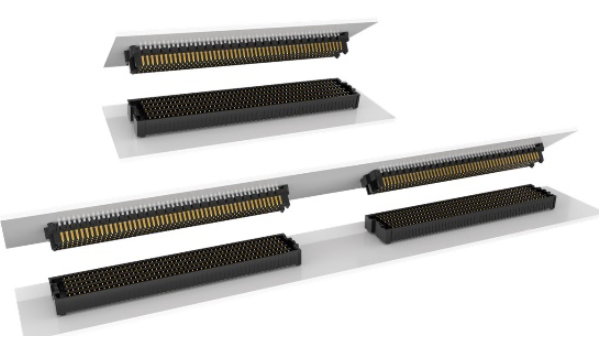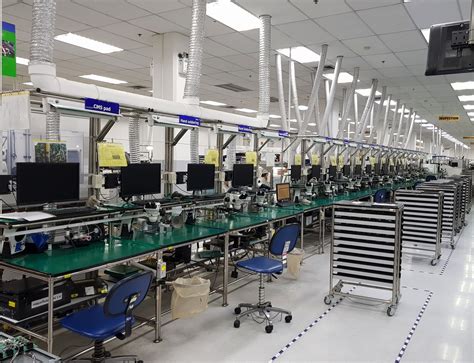PCB manufacturers actively deploy emerging application markets
As industry demand continues to change, PCB application demand has also changed, especially as electronic products evolve towards thinner and smaller sizes. The electronic circuit boards used in terminal bulk applications are getting smaller and smaller, and are replaced by smart mobile devices with higher precision. PCB demand is also moving towards a more advanced and diversified direction…
According to ITIS market research information, Taiwan’s PCB industry showed a slow growth in 2012 and 2013, with an output value of NT$405.7 billion in 2013. The annual growth slowdown has become a key warning. Looking at the proportion of PCB products used in Taiwan, it can be found that market information shows that computers and communication products account for more than 50% of PCB applications. Due to the poor market share of international large-scale brand computers and communication products, Taiwan’s PCB industry has been impacted. PCB manufacturers must plan ahead for future markets and related advanced applications.
Global PC/NB demand slows down, commercial replacement demand boosts
In addition, the results of the questionnaire survey conducted by the Taiwan PCB Association every six months for senior executives and professionals in the industry were reviewed. Based on the results of the questionnaire survey published in the first half of 2014, even though the global PC sales performance in the third quarter of 2013 was not as expected, and although the global PC sales volume fell to the lowest level since 2008, the IDC Japan report showed that even though the overall consumer market demand for PCs was declining, the commercial application market was affected by the end of support services for Microsoft Windows XP system in April 2014, which stimulated a wave of commercial PC replacement for Japanese companies and simultaneously boosted the overall commercial PC market shipments.
The performance of the PCB industry in 2013 was affected by the performance of the terminal product market.
The market demand for tablet computers and smart phones was strong. Even though PC manufacturers faced a continuous decline in shipments, in the second half of 2013, NB manufacturers competed to launch deformable tablet computer products to grab the tablet computer market, effectively boosting the sales of the conventional NB equipment market with sluggish sales performance.
Tablets are hot, directly impacting the demand for PC/NB market
Tablets are hot, directly impacting the demand for PC/NB market
Wearable devices are popular, and the demand for flexible board applications is increasing
The existing PCB application market is still dominated by computers and communication products. The poor market share of large computers and communication companies in the world has directly impacted the PCB usage and revenue. The growth of information and communication products has slowed down, and the overall market demand for PCBs has declined.
How to achieve sustainable development in the PCB industry has become an important key that needs to be broken through. Looking at the development trend of electronic products in the current market, it will be found that information and communication products continue to develop in the direction of lightness and thinness. In addition to the progress of intelligence, electronic terminal equipment continues to integrate in the direction of extreme miniaturization of wearable applications.
2013 can be said to be a year of brewing and collision of wearable device concepts. From smart bracelets, smart glasses and even smart watches, various wearable devices have been launched like mushrooms after rain. Related products have been launched from the perspective of crowd funding, new industries, or breaking through the previous perspective of information and communication manufacturers, sports or non-IT companies have launched new concept products through horizontal integration. After several years of collision between concepts and practicality, the original conceptual products have gradually matured in wearable application products in 2014, becoming an important driving force for the growth of the information and communication product industry.

Highly miniaturized integration of smart terminals
Looking at the market PCB application trend in 2014, due to the shrinking use of desktop computers and laptops in the market, the terminal sales situation is more eye-catching in the smart phone and tablet computer market, and the use of PCBs continues to decrease due to different product forms, and is integrated in the direction of thin, high-density, and multi-layer boards. Because the terminal smart devices continue to miniaturize the product size, the demand for flexible circuit boards is also increasing.
In addition, tablet computers and smartphones use embedded processor platforms and continue to develop towards SoC-based high integration. General-purpose processors integrate core application units such as memory, storage components, and communication functions, which has also greatly reduced the demand for electronic circuit substrates. After the miniaturization of electronic circuits, the use of flexible circuit boards, which are designed to meet the needs of thinner and lighter terminal products, continues to increase.
Wearable devices will explode in 2014, and the demand for related products is expected.
The same situation also appeared in the surge of wearable application products that began in 2014. Take smart bracelet products as an example. In the design of smart bracelet products, they are mainly used to record the wearer’s daily dynamics at all times. The user’s daily activity records are captured through MCU and MEMS sensors. In the hardware architecture of wearable products, MCU (low-end) and MEMS sensors are integrated, and low-power Bluetooth wireless communication and battery modules are attached.
The electronic circuit layout is relatively simple.
In order to integrate with the design of wearable accessories or sports applications, highly flexible soft circuit boards are the first choice for wearable applications. The same situation also appeared in the Google Glass smart glasses product developed by Google. Due to the relatively small available space configuration of the product, the use of integrated circuit packaging process to integrate electronic circuits, and the use of soft circuit boards to integrate connectors, touch modules or key sensors has become a common design direction for mainstream wearable applications.
Different from the decreasing PCB usage of desktop computers and notebook computers, the usage of special PCBs is also increasing, and related applications should not be underestimated. For example, under the trend of automotive electronics and energy-saving car/smart car integration, the usage of ECUs and electronic electrical equipment used in automobiles continues to increase, which not only drives the positive development of the automotive electronics market, but also increases the market demand for automotive PCBs. It is also an energy-saving LED lighting application. Due to the increase in market demand for terminal LED lighting bulbs and light boards, the application demand for corresponding PCB circuit substrates has also increased. The usage of PCBs for special needs of automotive electronics and LED lighting applications has also driven the PCB market momentum. As the usage of PCBs for information and communication products is decreasing in the direction of miniaturization, it can slightly make up for the current situation of slowing demand in the PC/NB market.
The picture shows the Apple Watch product released by Apple
In 2014, wearable application products will continue to surge. The picture shows the Apple Watch product released by Apple
Smart glasses products are small in size, and the available circuit board space is relatively limited. Flexible circuit boards are required to connect sensors and other key components
Smart glasses products are small in size, and the available circuit board space is relatively limited. Flexible circuit boards are required to connect sensors and other key components

Focus on future products and create high value-added applications
However, in the long run, the PCB market has limited momentum to boost market demand by tablet computers, smart phones or wearable applications. Except for the high integration of electronic circuits and the trend of miniaturized product configuration of related products, the use of PCBs is decreasing. Although it drives the use of high-efficiency flexible circuit boards, it does not help much with the demand for conventional PCBs. The PCB market should not have much chance of huge growth. Instead, it is more likely to create high value-added applications by focusing on future products and novel applications.
In addition to the high-precision multilayer boards or integrated circuit packaging solutions driven by wearable applications and advanced smart handheld devices, the demand for flexible circuit boards driven by related miniaturized information and communication equipment is increasingly strong. Although the market application volume of derivatives such as medical electronics and innovative application fields is not large, the related special applications have higher gold content and higher added value than general PCBs or flexible circuit boards, which is also a direction that PCB manufacturers can continue to pay attention to in the future.
In addition, observing the current situation of the mainland market, branded smartphones continue to show high growth.
According to market research agency IDC, the shipment volume of smartphones in mainland China is estimated to reach 360 million in 2013, and it is estimated that the shipment volume will continue to grow at a high rate in 2014. Major global information and communication brand manufacturers are still actively investing in the research and production of new electronic products. At present, emerging application markets such as wearable devices, automotive electronics, and medical electronics have become the active layout targets of major PCB manufacturers.






